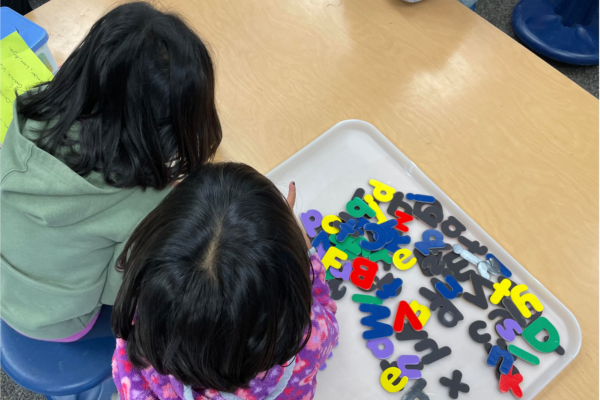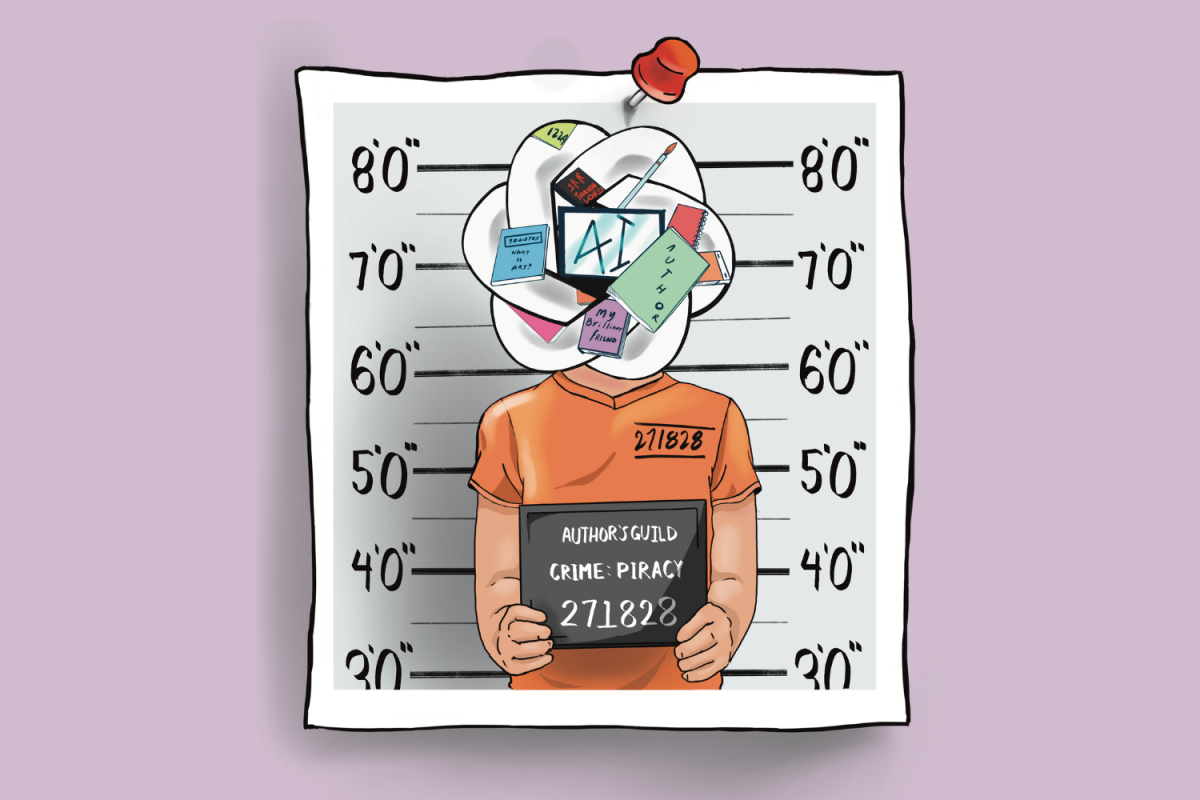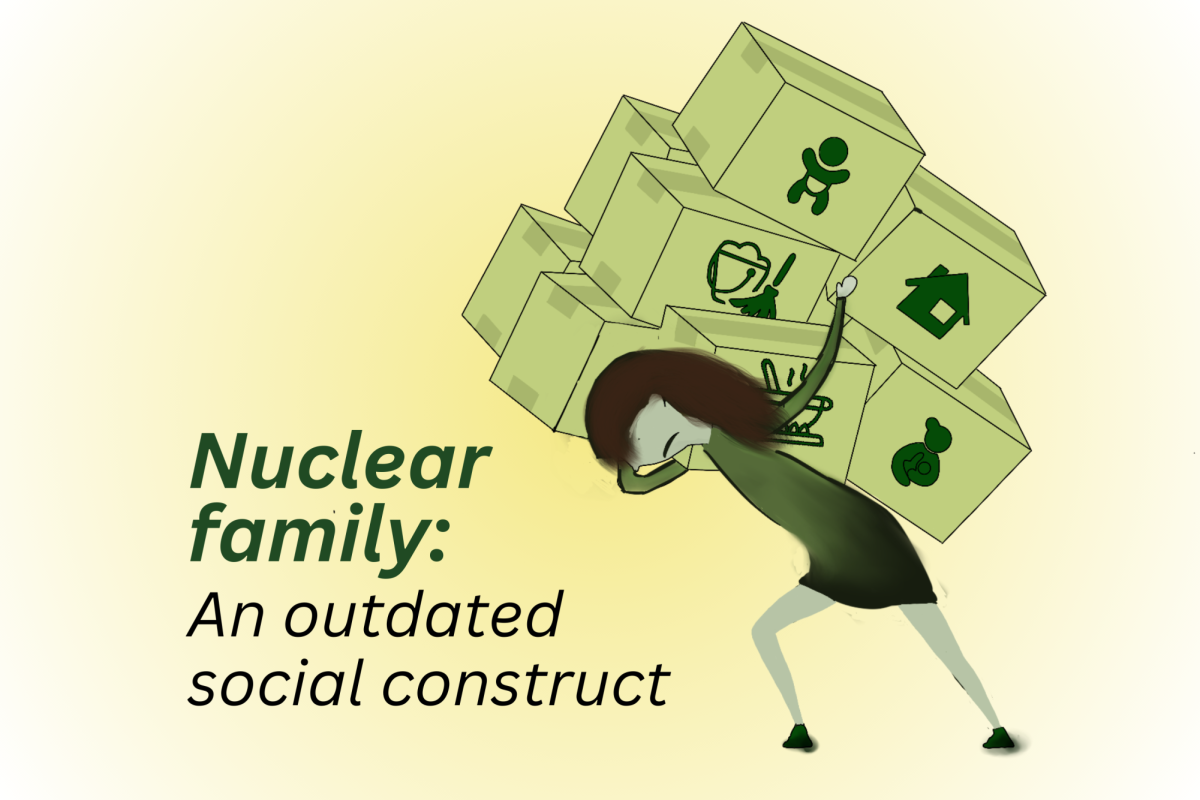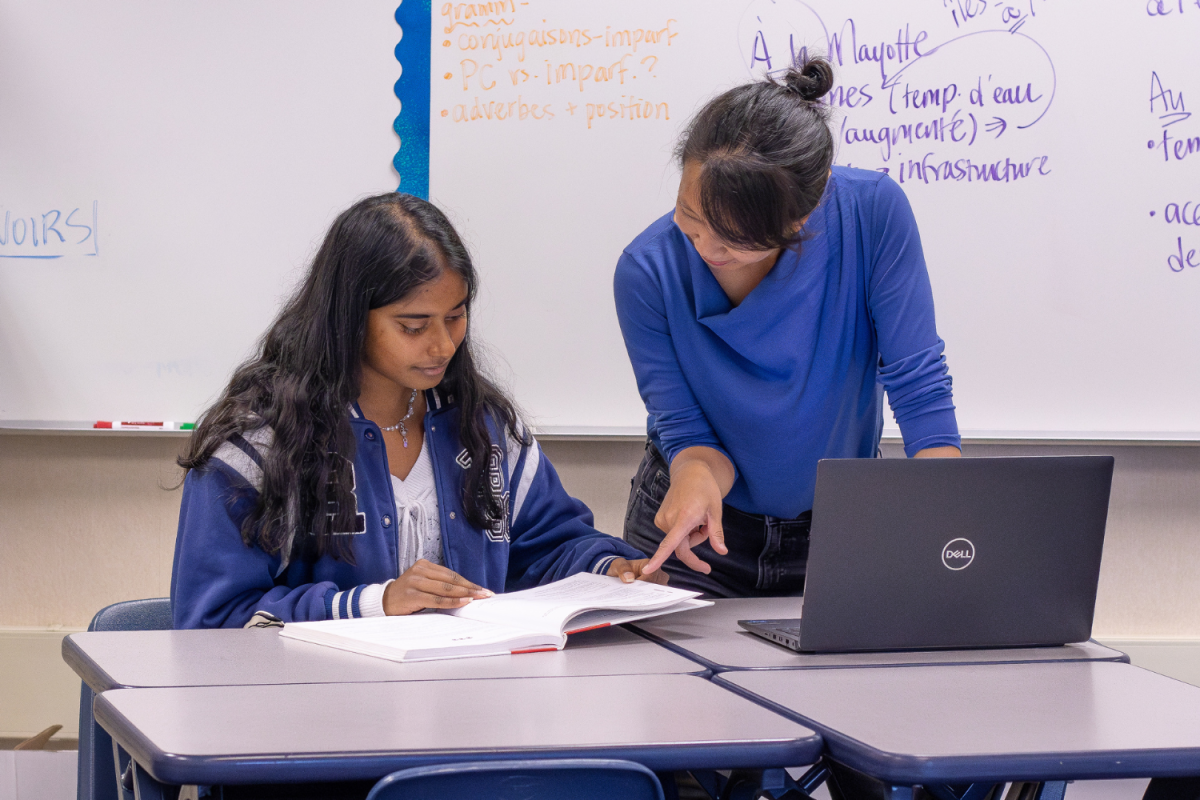- California is in the midst of transitioning to Universal pre-K after a new law took effect in 2021
- Bay Area school districts have been expanding transitional kindergarten access since the 2022-23 school year.
- Despite some districts facing setbacks in having adequate facilities, educators are optimistic about the future of early childhood education in the state.
Two years since Governor Gavin Newsom signed California’s flagship Universal pre-Kindergarten program into law — scheduled for full implementation by the 2025-26 school year — educators across the Bay Area are optimistic about the future of expanded early childhood education.
“We’re really grateful for the opportunity to expand our transitional kindergarten program,” said Dr. Michelle Herridge, Director Of Educational Services Department at the Cupertino Union School District. “It’s a really great opportunity for families and children to get connected to their school sites at an even younger age.”
Since the 2006 failed ballot initiative to establish universal public preschool, California voters have only become more eager to expand early education initiatives. This culminated in the creation of the California State Preschool Program in 2008, and the establishment of limited TK across the state in 2010. During Governor Jerry Brown’s tenure, these efforts were scaled back due to his administration’s skepticism of data that highlighted long-term benefits. However, after Governor Gavin Newsom came into office, he made UPK a top priority under his California Comeback Plan, aimed at assisting the COVID-19 economic recovery.
The law, passed in 2021 as a part of the California Department of Education’s Transforming Schools Initiative, stipulates that California public schools are to provide expanded early childhood education services, including universal transitional kindergarten, a form of pre-K, by the 2025-26 school year. In total, it budgets around $2.7 billion over the course of four years toward early education initiatives throughout the state, administered through a ‘mixed delivery system’. This includes additional funding for public and non-profit preschools, as well as infrastructure and professional development opportunities to support early childhood education.
“Mixed delivery means that it involves various entities, such as school districts, community-based organizations driven by non-profits, county offices of education, and other community organizations,” said Scott Moore, Executive Director of Kidango, a prominent Bay Area nonprofit in the early childhood education and care space. “It’s not exclusively limited to expanded TK in school districts; rather, you also have non-profit organizations providing these services as well.”
To obtain resources and money to facilitate the TK expansion, districts were required to submit comprehensive plans outlining their approach to implementing the new programs and mandates. Furthermore following approval from the CDE, they have been required to regularly commission reports on finances, the state of the new programs and key focus areas.
Since the 2022-23 school year, the state has been annually increasing the range of birthdays eligible to enroll in TK, and by the 2025 school year, TK should be accessible to all children who turn 4 years old by Sept. 1. The law only mandates access to TK in public schools, not necessarily requiring that parents start their child’s public instruction a year earlier.
“Parents do have a choice,” Moore said. “If you’re eligible for programs like Head Start, preschool, or TK, you can choose among the three. The real answer depends on what school environment and classroom would be the best fit for a particular child. “
School districts across the Bay Area have also been ahead of the curve in expanding these programs. For instance, districts such as Santa Clara Unified School District and CUSD have provided limited TK programs at select schools since 2012 and 2015 respectively. In contrast, as of the 2023-24 school year, CUSD has implemented at least one TK classroom in 11 out of 18 of their elementary and alternative schools and plans to expand to further schools in the coming years based on parental demand.
“Originally, TK was offered at fewer CUSD schools with overall lower enrollment, because fewer children qualified based on their age,” Herridge said. “But with the state’s infusion of resources and money, we have so many more children who are able to participate and be a part of our TK program.”
Educators and community members have also generally responded positively to the expanded programs, despite a nationwide teacher shortage and the $2.7 billion price tag.
“We’re fully supportive of it, “ said Kate Lee, president of CUSD’s teacher union, the Cupertino Educators Association. “It’s wonderful that public education is expanding down to what would typically be preschool-age children and having that be a part of the public education system.”
According to Lee, although CUSD and other districts across the Bay Area have had little trouble hiring new credentialed teacher positions, hiring enough non-credentialed teacher aides to meet the required 1:12 teacher-students ratio has proven to be a challenge. The law mandates that all TK classrooms are required to have a credentialed teacher and a teaching aid. Additionally, teacher aides may have lower salaries than their credentialed counterparts, which could explain the lack of interest in the positions.
“There is a very clear answer to how to address teacher shortages: Money,” government teacher Jeffery Bale said. “There would be no teacher shortage if there were higher salaries.”
In addition to staffing concerns for teacher aides, there were other issues that districts encountered. For instance, the state didn’t provide any mandated or approved curriculum, which created inconsistencies for teachers and TK students across the state.
Another problem that arose in the midst of the expansion was that most public school infrastructure in districts across the Bay Area and California were not designed or built to accommodate TK needs. Some of the existing infrastructure failed to account for the shorter height of students and were located too far from cafeterias. Similarly, meeting the required one toilet per 20 TK and Kindergarten students, located in the TK classroom or complex, as well as implementing other quality of life improvements for TK classrooms, has prompted some districts to prepare for major upgrades to school infrastructure. For some campuses, that may involve constructing an entirely new complex and making modifications to existing buildings, implementing new plumbing lines, and other adjustments that will be crucial as TK continues to grow.
Some educators across Bay Area districts also believe that districts lack long-term planning regarding the expanding age range and number of TK students. For instance, concerns around school administrations potentially lacking clear procedures for changing soiled clothing, diapers and pull-ups, in addition to providing needed PPE and other accommodations for students’ toileting needs.
“I think it’s a learning process and in developing these TK programs it is crucial for administration to listen to the TK teachers because they’re the ones who really know and understand what student’s needs are and how to improve it.“ Lee said.
However, one of the most pressing challenges facing educators is getting information about the various programs out to families. In Santa Clara County, the Steps to Success Campaign aims to spread information about the expanded opportunities through high-visibility and multilingual channels to reach as many families as possible. Families who are interested in early childhood education may visit enrollsantaclara.org for more information.
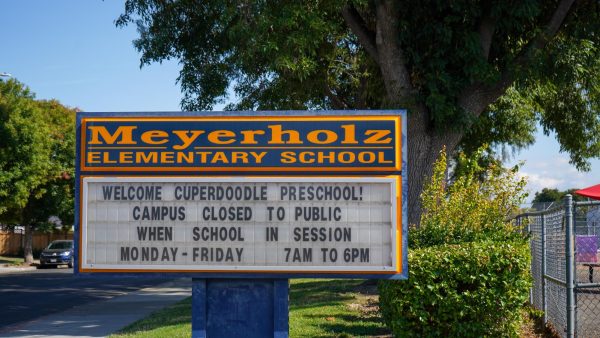
Numerous studies examining preexisting universal pre-K programs have shown potential short and long-term benefits for students of all income groups, most significantly, low-income students who might not be able to afford private education services which can be thousands of dollars per month.
However, trying to gauge the effectiveness of such programs presents its own set of difficulties, as Bale highlighted.
“There are so many variables that it is very difficult in any short period of time to recognize whether it’s actually doing what it’s supposed to be doing, or whether we’re getting spurious correlation statistics,” Bale said. “We can’t do lab experiments with humans, which is the frustrating aspect of trying to measure anything.”
Research frequently referenced by advocates of expanded early education has been shown to provide students with critical socialization, arithmetic and reading skills that would allow them to better succeed in kindergarten and beyond. Improved early childhood education has also been studied to increase high-school graduation rates and college attendance. According to a study published by the American Psychological Association, it can also lead to improved performance in STEM subjects such as science, technology, engineering and math through high school.
“During the one year that my son was in a preschool program run by our local school district, we were very pleased,” Bale said. “It really was a great introduction to school, and he made the transition to kindergarten pretty flawlessly as a result.”
The studied potential long-term societal and economic benefits have also proven to be attractive to both Republican and Democratic state governments. California is one of the latest of a handful of states that already implemented similar universal programs. Whether a state has universal access is defined by criteria set by the National Institute for Early Research and other advocacy groups, which specify that universal access is achieved when enrollment reaches 70% of all 4-year-olds in the state. This trend includes both democratic-leaning states such as New York and New Jersey, and more conservative states such as Florida, Oklahoma and Alabama.
“Long term you see higher rates of employment and earnings and lower rates of incarceration, participation in the welfare system, lower rates of drug use and other things that can be very traumatic for anyone to experience, but also quite costly for the government,” Moore said. “So while universal pre-K can seem costly, it is an effective governmental investment.”
Some critics, however, aren’t convinced by the potential benefits of the programs. Their concerns lie in the negative effects that the expanded provisions may bring for the for-profit early childcare and education industry. They argue that universal TK will lead to an exodus of both teachers and families as they choose a more affordable state offering, thereby decreasing their profitability. Moore, however, sees this shift in a more positive light.
“We know that there’s a real lack of capacity for infant, and toddler child care in California and across the country,” Moore said. “So now that transitional kindergarten will soon be able to serve all four-year-olds, hopefully, those for-profit providers will start to serve younger and younger children, which is really going to help meet the needs of families.“
Despite numerous states moving to expand early education access, on a federal level, no such initiatives seem to be gaining any traction for the foreseeable future. In mid-2021, President Joe Biden proposed a plan for universal pre-K as a part of the American Families plan which aimed to provide access to preschool for all 3 and 4-year-olds in the country. The proposal was set to cost $1.8 trillion over the course of 10 years. However, the political feasibility of such a proposal passing a highly polarized legislature was low even as Democrats held a razor-thin majority, and still is.
“What’s interesting about this is that on a state level, it does not appear to be a highly partisan issue,” Bale said. “On the national level, it does appear to be a very partisan issue.”
Moore also emphasized that while the law so far has been a step in the right direction, there is still much that needs to be done to ensure the benefits are sustained. He proposes that the state should now focus its efforts on expanding pipelines for early education employment — enabling educators to continue their studies in higher education while simultaneously and affordably obtaining their teaching credentials. For instance, a program that would allow individuals to start as preschool teachers, even without any college education or just a high school diploma. These teachers would then receive support and opportunities to progress in their careers, eventually becoming teaching assistants and elementary school teachers.
Looking to the future, districts across the state will continue to expand TK access through the 2025-26 school year. With its expanded early education initiatives, California’s investments will hopefully make a tangible impact on the next generation of students and eventually the state itself.
“Education policy is always challenging, and it’s pretty evident that the new programs will have positive effects for some groups,” Bale said. “Will it be worth the cost and energy to do it? That’s what California needs to decide — and I think that down the road, we’ll have a better idea, but the bottom line is we won’t know unless we try it.”























































